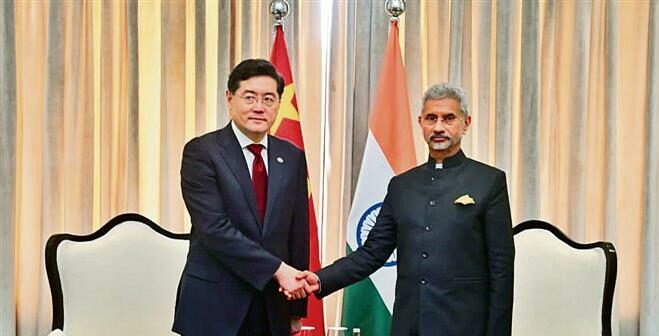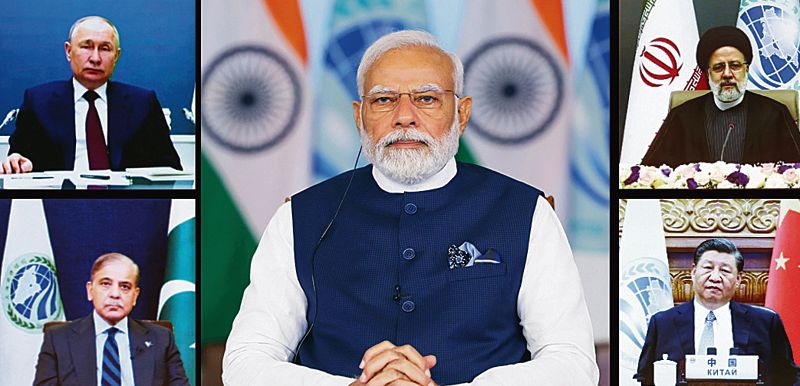With Chandrayaan-3 Launch, India Heads for the Moon
THE DIPLOMAT
APLN member Rajeswari Pillai Rajagopalan writes on India’s Chandrayaan-3 launch, arguing that the mission is a natural progression of India’s space program but it is also indicative of the growing space competition in the Indo-Pacific and beyond. Read the original article here.
India launched Chandrayaan-3, its third mission to the Moon, on July 14. It was launched on a LVM3 heavy-lift launch vehicle, named “Bahubali,” from the Satish Dhawan Space Centre in Sriharikota in southern India. The Chandrayaan-3 will travel for more than a month to land on the surface of the Moon in early August. A successful mission will make India the fourth country in the world – after the United States, the Soviet Union, and China – to do a soft landing on the Moon. Following the launch, the Indian Space Research Organization (ISRO), India’s civil space organization tweeted that the “LVM3 M4 vehicle successfully launched Chandrayaan-3 into orbit.”
This is India’s second attempt at landing on the Moon. Chandrayaan-3 comes four years after Chandrayaan-2 had a hard landing on the Moon’s surface in September 2019. Even though the mission reached the lunar surface, it ultimately failed because of a communication breakdown between the craft and the ground stations, at an altitude of just 2.1 kilometers from the surface of the Moon. Prior to that, in October 2008, India launched a Chandrayaan-1, which was largely an exploratory mission, but it also included a Moon Impact Probe. The mission confirmed the presence of water on the lunar surface. That mission also had a communication glitch that cut short the mission after slightly over 300 days, although the orbiter itself appears to have stayed up for several more years.
The Chandrayaan missions represent a major triumph for India and its space agency. India’s space program is largely focused on pursuing its developmental agenda through communications and earth observation satellites. Nevertheless, there has also been some focus on space exploration. For example, in 2014, India launched its Mangalyaan mission, a Mars orbiter, making India the first Asian nation to reach Martian orbit. It was also the first country to succeed in a maiden Mars orbiter attempt. China had previously attempted such a mission in collaboration with Russia in November 2011, but it failed. China subsequently launched a successful Mars orbiter and landing mission in 2021.
This illustrates another aspect of India’s space program that has become increasingly important: its competition with China. Although the Indian space program is far smaller, and less capable, than China’s, India does want to stay in the race. Space has become another arena of great power competition and India is increasingly partnering with Western powers in the emerging new global space race.
During Prime Minister Narendra Modi’s state visit to the United States, India signed on to the Artemis Accords, which is a U.S.-led lunar cooperation and governance mechanism. The Artemis Accords are driven by key principles such as peaceful exploration, transparency, interoperability, registration of objects, preserving outer space heritage, preventing harmful interference, and safe disposal of space debris, all of which are enshrined in the Outer Space Treaty (OST) of 1967, the foundational legal instrument that governs outer space activities.
Critically, the Artemis Accords leave out China and Russia. India signing onto the Artemis Accords is a departure of sorts because India had traditionally preferred to remain unaffiliated when it came to its space programs, though it had received considerable assistance from the United States, France and Soviet Union. During Modi’s visit, India and the U.S. also reached an agreement for India to send an astronaut to the International Space Station in 2024.
The Chandrayaan-3 comprises a lander, a propulsion module, and a rover. The goal of the mission is to land on the surface of the Moon, collect data, as well as do a series of scientific experiments that will enhance our understanding of the Moon. The lander has a number of payloads including Chandra’s surface thermophysical experiment (ChaSTE) to measure thermal conductivity and temperature; the instrument for lunar seismic activity (ILSA) for measuring seismicity around the landing site; and the Langmuir probe (LP) to estimate plasma density and its variations. Chandrayaan-3 is also carrying a passive Laser retroreflector array from NASA to carry out lunar laser ranging studies. In addition, the rover has payloads such as the alpha particle x-ray spectrometer (APXS) and laser induced breakdown spectroscope (LIBS) for deriving the elemental composition in the vicinity of landing site.
The Chandrayaan-3 is also a success for India’s heavy-lift rocket, the LVM3, previously called the GSLV Mk III.
While the final results of the Chandrayaan-3 mission will be known only toward the end of August, it does demonstrate India’s ambition and capabilities. If the mission is successful, it will boost India’s other space ambitions, including the launch of its human space mission slated for 2024.
Image: Depositphotos




